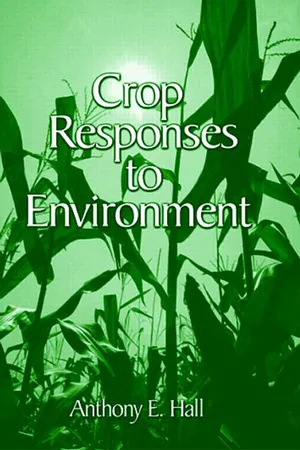
Plants for Environmental Studies
- 560 pages
- English
- ePUB (mobile friendly)
- Available on iOS & Android
Plants for Environmental Studies
About this book
One of the problems of using plants in environmental studies is finding current information. Because plants play a key role in environmental studies, from the greenhouse effect to environmental toxicological studies, information is widely scattered over many different fields and in many different sources. Plants for Environmental Studies solves that problem with a single, comprehensive source of information on the many ways plants are used in environmental studies. Written by experts from around the world and edited by a team of prominent environmental specialists, this book is the only source of complete information on environmental impacts, mutation, statistical analyses, relationships between plants and water, algae, plants in ecological risk assessment, compound accumulations, and more. Encompassing algae and vascular plants in both aquatic and terrestrial environments, this book contains a diverse collection of laboratory and in situ studies, methods, and procedures using plants to evaluate air, water, wastewater, sediment, and soil.
Frequently asked questions
- Essential is ideal for learners and professionals who enjoy exploring a wide range of subjects. Access the Essential Library with 800,000+ trusted titles and best-sellers across business, personal growth, and the humanities. Includes unlimited reading time and Standard Read Aloud voice.
- Complete: Perfect for advanced learners and researchers needing full, unrestricted access. Unlock 1.4M+ books across hundreds of subjects, including academic and specialized titles. The Complete Plan also includes advanced features like Premium Read Aloud and Research Assistant.
Please note we cannot support devices running on iOS 13 and Android 7 or earlier. Learn more about using the app.
Information
Table of contents
- Cover
- Title Page
- Copyright Page
- Preface
- Editors
- Contributors
- Table of Contents
- Chapter 1 The effects of ultraviolet-B radiation on higher plants
- Chapter 2 Radiation effects on plants
- Chapter 3 Plant-water interactions
- Chapter 4 Plant activation of environmental agents: the utility of the plant cell/microbe coincubation assay
- Chapter 5 Statistical methods in plant environmental studies
- Chapter 6 Water quality and aquatic plants
- Chapter 7 Algal indicators of aquatic ecosystem condition and change
- Chapter 8 Photosynthetic electron transport as a bioassay
- Chapter 9 Laboratory bioassays with microalgae
- Chapter 10 Aquatic plant communities for impact monitoring and assessment
- Chapter 11 Allium test for screening chemicals; evaluation of cytological parameters
- Chapter 12 The use of vascular plants as "field" biomonitors
- Chapter 13 Metal accumulation by aquatic macrophytes
- Chapter 14 Bioaccumulation of xenobiotic organic chemicals by terrestrial plants
- Chapter 15 Uptake of polycyclic aromatic hydrocarbons by vegetation: a review of experimental methods
- Chapter 16 Plant uptake and metabolism of polychlorinated biphenyls (PCBs)
- Chapter 17 Selection of phytotoxicity tests for use in ecological risk assessments